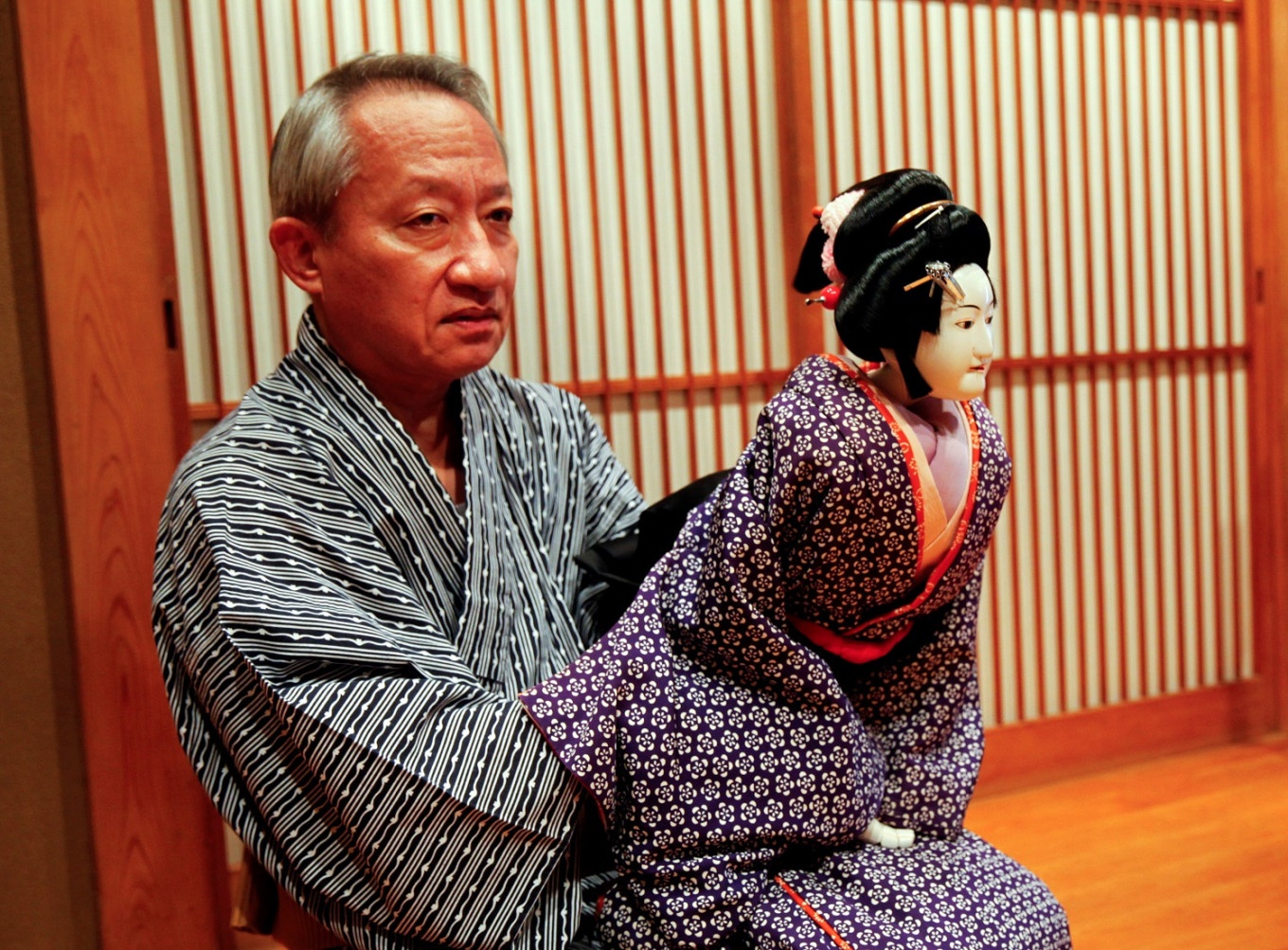His art, a traditional, male-only Japanese puppet theatre, was born in Osaka in the late 1600s, but in 2020 felt existentially threatened, he said.
“Many things crossed my mind: when would the pandemic end, when would performances resume, if my 87-year-old master could ever perform again,” Kanjuro, 67, said in his home, which has a room dedicated to puppetry.
The solution was to spend his time at home making puppets for children. It is a rare pursuit for a Bunraku puppeteer. To him, it tied into decades of efforts he’s made to keep the centuries-old art of Bunraku alive. He has been teaching Bunraku at Kozu elementary school in Osaka for 17 years.
Nearly 30 sixth graders took part in recent classes, with children practicing their puppetry in a gymnasium amid scorching heat, as a T-shirt-clad Kanjuro instructed them.
In Bunraku, each puppet is operated by three people – the head puppeteer, and two others dressed in black, their faces covered. The head puppeteer manipulates the head and right hand, while one person manipulates the left hand and another both feet. Performances are accompanied by narrators, or tayu, and traditional instruments.
The five puppets Kanjuro made had comical faces framed by yarn hair. They also wore socks in neon-bright colours he had purchased online.

